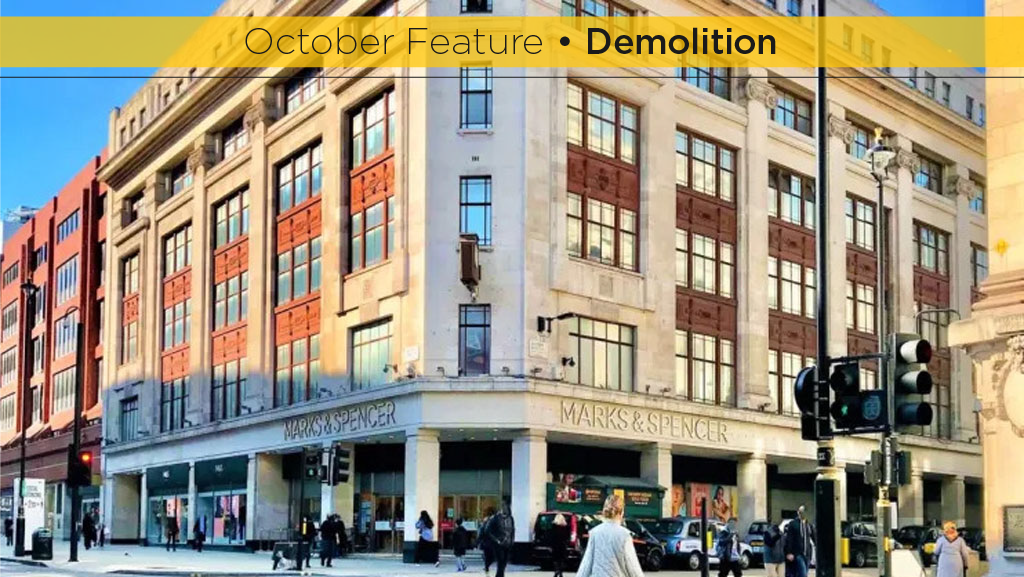The order of processes for the removal of an existing structure with the objective of reducing waste and upfront embodied carbons now prioritizes decommissioning and deconstruction.
Within the decommissioning and deconstruction processes lie further options concerning the identification of materials that can be resold, recycled and reused. Outright demolition is a last resort.
Many designers and industry observers are not happy with any of those choices and options. They suggest the most effective way to reduce upfront embodied carbon emissions from construction is to not build anything.
“The greenest building is the one that already exists” is a phrase often heard. In today’s world, that statement is considered unreasonable.
More realistically, buildings can be retrofitted to achieve a new purpose.
Ben Flatman, architectural editor at U.K.-based Building Design magazine, sees retrofitting as more attuned to the outlook being adopted by a new generation of designers and builders.
“Demolition and new build is seen as wasteful and unsustainable,” he . “The world in which old buildings were swept aside without a second thought and new builds were designed with 30-year lifecycles seems increasingly at odds with this new mood.”
The question now being raised in Britain is, “Who makes the decision to remove or retrofit?”
In the case of a privately owned building, one might think it would be the owner. However, recent events have turned that assumption on its head.
In a move that has aroused considerable debate, Michael Gove, the British Secretary of State for Housing and Communities, has rejected the demolition of a privately-owned building in central London.
British retailer Marks & Spencer (M&S) had received approval from Westminster Council and city hall to demolish its Art Deco flagship store along with two additional structures and replace them with a 10-storey retail outlet and office building. M&S would occupy the first two levels and the remainder would be rentable office spaces.
Historical groups in the U.K. are over the moon about Gove’s decision.
“We salute the secretary of state. The M&S result is a landmark decision,” Henrietta Billings, director of SAVE Britain’s Heritage. “Secretary of State Michael Gove accepted our arguments that M&S did not fully explore alternatives to demolition, or demonstrate that a refurbishment would ‘not be deliverable or viable.’”
Billing’s viewpoint is not shared by all.
“Michael Gove’s rejection of the planning inspector’s decision was misguided,” Fred Pilbrow, founding partner of Pilbrow & Partners, designers of M&S’s replacement building.
Strategic locations in central London like the M&S site, “must fully deliver their potential for sustainable good growth,” he says. “An environmentally advanced new building” would create new jobs accessible through the underground system and create new public space, among other benefits. In contrast, “a doctrinaire orthodoxy to the contrary, which retains every existing structure irrespective of merit, freezes the city and robs it of vital potential for adaptation and growth.”
“I would liken this to a discussion about a not-very-well-performing diesel car from the 1970s, and what we’re trying to do is replace it with a Tesla,” Pilbrow magazine.
In response to Gove’s decision, M&S has launched a legal challenge.
“We have done this because we believe the secretary of state wrongly interpreted and applied planning policy to justify his rejection of our scheme on grounds of heritage and environmental concerns,” company operations director Sacha Berendji. “M&S is now left with no choice but to review its future position on Oxford Street on the whim of one man. It is utterly pathetic.”
The M&S debate is already having an effect on redevelopment plans in London, Thomas Lane.
“The big London-based developers have already taken this on board and are making efforts to retain the frames of buildings where these have sufficient floor-to-ceiling heights, structural capacity and are in good condition.”
An individual cabinet minster blocking the demolition and redevelopment of private property is without parallel in �°������ϲʿ������2023. The closest similarity to a removal-versus-retrofit debate regarding a landmark structure might be the ongoing discussions concerning the future of 24 Sussex Drive, the official residence of �°������ϲʿ������2023’s prime minister.
The non-profit organization Historic Ottawa Development Inc. the CBC that it would be “callous” to demolish the 150-year-old building, despite reports of its decrepit condition.
The Ontario Society of Professional Engineers has taken a more measured position, it “strongly supports and recommends that any new renovations or dwelling that is built uses as much Canadian clean technology as appropriate to showcase home-grown innovation and environmental stewardship.”
The global publicity created from the Gove/M&S situation may encourage developers everywhere to consider the of Richard McWilliams of global service company Turner & Townsend: “Retrofit is not the enemy, it’s a golden opportunity.”



Recent Comments
comments for this post are closed